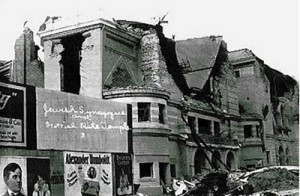David Talbot’s Season of the Witch: Enchantment, Terror, and Deliverance in the City of Love offers up San Francisco in all its messy, conflicted, partisan glory, a place where conservatives battle gays and hippies for the soul of the city, where drugs are plenty, and where the politics are bare knuckled and bloody, all accompanied by a great soundtrack. In dizzying sequence, the book takes us on a whirlwind tour of the 60s and 70s, with special focus on the rise and fall of the city’s politicians, the DA’s office, Haight-Ashbury, and gay rights, before culminating in the events that many saw as the end of the ride: the deaths in Jonestown, and the murders of Supervisor Harvey Milk and Mayor George Moscone. The rapid-fire journalist’s style ranges from the gossip column to the city page, keeping up a steady barrage of celebrities and only-in-San-Francisco personalities to illustrate the city’s penchant for attracting the world’s lost, desperate and repressed souls yearning to be free, and the unique mix of belligerence and style of those born and reared in the City by the Bay. The ride is at times dogged by a thinly-veiled love for the people he recounts, ranging from the Hallinan clan to Janis Joplin, but Talbot does a very good job of articulating the connections between the different groups working in the city. Its one oversight – and it’s a glaring one – is that the women’s movement for equal rights, feminism, and the struggle for equal recognition of women within the gay community remains remarkably absent.
As for those who either were part of Peoples Temple, or have studied its history, there is little new material here. Talbot relies on many of the usual charges to make Peoples Temple a centerpiece of the enchantment and terror that gripped San Francisco during the 1970s, providing a natural culmination of the decade already tainted by the Zebra murders and the Manson family. Talbot places Peoples Temple and Jim Jones within the “Terror” section of the book, in chapters titled “Inside Man” (referring to Tim Stoen’s position as Deputy District Attorney), “Slouching Toward San Francisco” (referring to the Temple’s migration to San Francisco from Redwood Valley); “Prophet of Doom”; Exodus” and “Rapture in the Jungle.” While relying heavily on the narratives that have been told in works such as Layton’s Seductive Poison and Reiterman’s Raven, Talbot is more emphatic in his focus on Jones’ sexual preferences and manipulation of local politicians to achieve the goals of the church.
However, the book’s tone – with its interviews of staffers in the DA’s office during Joe Freitas’ tenure – does alter the perspective in some ways, providing one more lens into the interface between the Temple and the politicians of San Francisco from those generated both by survivors, the documents, reporters and filmmakers’ reconstructions. Though the influence of Jones and his ability to turn out his flock for public demonstrations and political actions is well known, Talbot gives the Temple an enormous amount of clout in the city’s political machinery. He asserts that Peoples Temple helped Moscone not only win the election for mayor with aggressive campaigning, but by busing in voters from all over the state to vote in multiple precincts within the city. It’s within Freitas’ District Attorney’s office that we hear about the hindrances to the city’s investigations of Peoples Temple, both by Stoen’s presence and Freitas’ own unwillingness to pursue allegations raised first by Jeannie and Al Mills. Quotes from investigator David Reuben reveal the level of political clout that Jones had established, as time and again he and Bob Graham, chief of the special prosecutions unit, were discouraged pursuing the allegations. But much of the writing here as well relies upon inference, to posit, as examples, that the presence of Stoen resulted in stolen election files and that Stoen had a loyalty deeper than that to Peoples Temple, in the form of an unnamed government agency. Stoen was not interviewed.
The terror, of course, is the deaths in Jonestown and Georgetown, and Talbot relies almost entirely on the “Death Tape” to narrate the events of November 18, 1978, giving special attention to Christine Miller’s defiance of Jones, and quoting Jones’ more infamous lines from that night. Talbot is quite open about his own feeling that Jonestown was a slaughter of the membership, held in thrall by Jones. And those who were also held in thrall – politicians such as Moscone, Harvey Milk, and Willie Brown, Jr. – are seen as equally mesmerized and fearful of Jones and his power, deferring to him to avoid the political costs of alienating him and losing the extraordinary numbers of members that he could produce. The deaths of Milk and Moscone seem somehow preordained within this framework, as both were loyal to Jones; though victims of Dan White’s rage, they represent the rise of the left that supported Jones’ work.
Altogether, Talbot’s work rides along the surface of a large number of events, depicting San Francisco as it was in a decade of possibility and its decline into terror, then deliverance in the form of football – the 49ers’ victory over Dallas in 1982 in the NFC Conference game made famous by “The Catch.” It’s superficial in its treatment and often dubious in its proof, but it does manage to capture what both attracts and repels America about San Francisco, and how that enchantment leads to the possibility of radical change in the face of opposition.
(Tanya Hollis was a frequent contributor to the jonestown report during her tenure with the California Historical Society. She is also the author of “Peoples Temple and Housing Policies in San Francisco” in Peoples Temple and Black Religion in America, edited by Rebecca Moore, Anthony B. Pinn, and Mary R. Sawyer (Bloomington: University of Indiana Press, 2004).)
